Star anise is the the fruit of the Illicium verum plant, an evergreen shrub native to Southwest China. The star anise pod, which is shaped like a star (hence its name), has an average of eight points, each containing a single pea-sized seed. Both the seeds and the pod are used in cooking and contain the sweet, potent anise flavor.
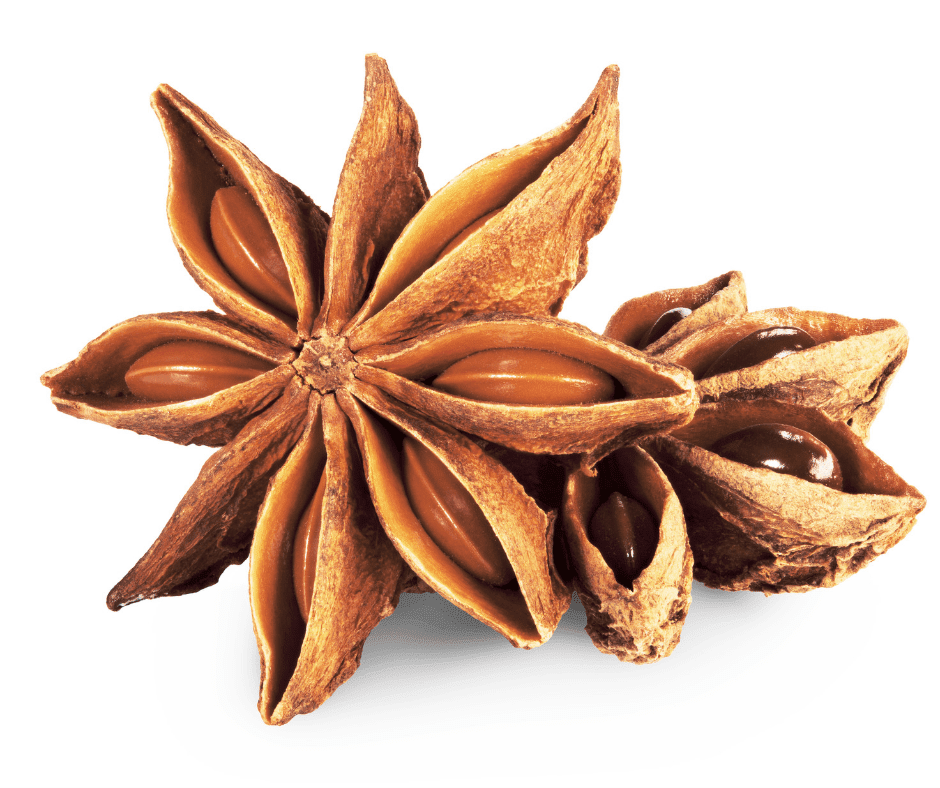
Star anise aka Chinese Anise, is used in culinary applications for its distinct flavor and is a pillar ingredient in Chinese cooking. It is one of the main flavors in Chinese five-spice powder and is also used to make tea, season roast duck and other meats. In Vietnamese cuisine, star anise is part of the well-known soup, pho. In Western cultures, it is more often used to flavor liqueurs, such as absinthe, sambuca, and pastis, as well as baked goods like cookies and cakes.
Aside from its delicious flavor, star anise contains a wide variety of medicinal benefits, and has been used in Chinese traditional medicine for over 3,000 years.
According to traditional beliefs, star anise is considered pungent, sweet and warm, disperses cold, warm the liver and kidneys, relieves pain, regulate the qi and improves appetite.
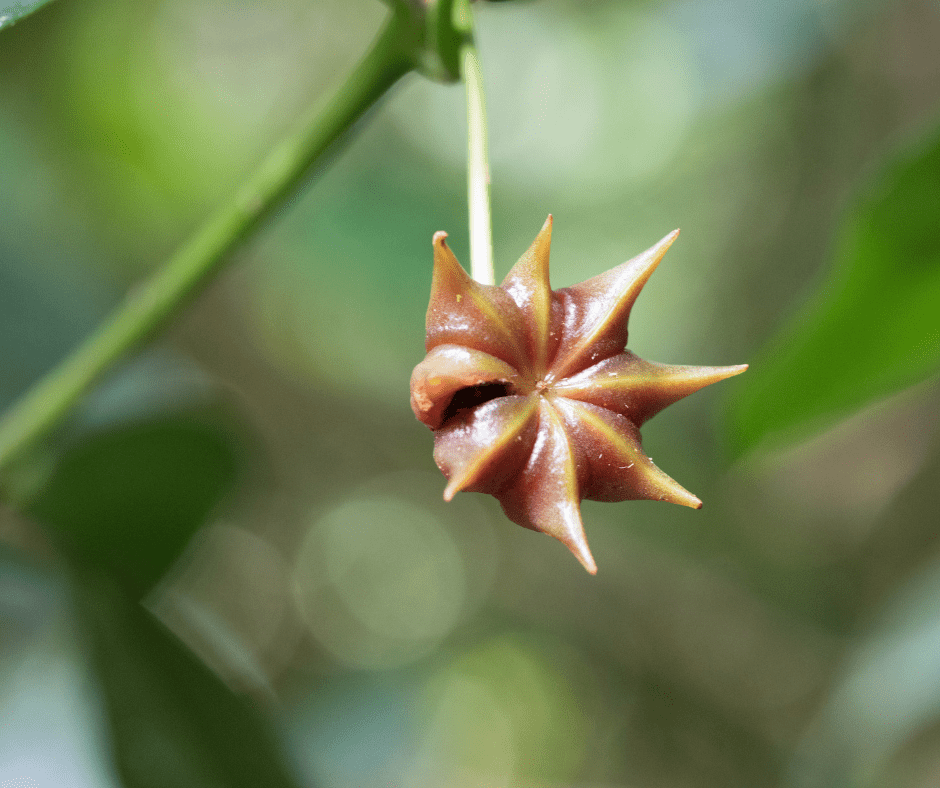
Medicinal Benefits
Antioxidant Benefits: Many antioxidants occur naturally in plants, and star anise shown to have 13 to 25 highly active compounds with strong scavenging abilities, that seek out free radicals and protect cells and DNA. The same compounds that give a sweet, licorice like flavours produce numerous health benefits.
Normal body functions, such as breathing or physical activity, and other lifestyle habits (such as smoking) produce substances called free radicals that attack healthy cells. When these healthy cells are weakened, they are more susceptible to cardiovascular disease and certain types of cancers. Antioxidants such as vitamins C and E and carotenoids, which include beta-carotene, lycopene and lutein, help protect healthy cells from damage caused by free radicals.
Insect Repellent: The ingredients within its essential oils possess properties making them effective all-natural repellants against several insect species.
Insects do not like anethole which is a major compound of star anise volatile oil. Studies shown that anethole was 80% effective fumigant against German cockroaches. Anethole and other essential oil ingredients (like alpha-terpinene, alpha-pinene, beta-pinene, limonene and, estragole linalool) together with versions of shikimic acid create a long lasting control of different cockroach, mite and other insect populations. Such oils have also been used as all-natural pesticides protecting grains and other crops.
Fights Viruses and Flu: While many fruits and vegetables offer generous amounts of antioxidants that boost immunity and reduce the risk of infection, none do it quite like star anise. It’s main compound is shikimic acid that has been used for over 30 years to produce an antiviral vaccine Oseltamivir (also known as Tamilflu, a drug that used to treat bird flu). Star anise has the highest concentration of shikimic acid from all the plants in the world.
Studies show that combining shikimic acid with quercetin (strong antioxidant found in many spices) have significantly increased immune cells compared to standard antiviral treatment.

Digestive Aid and Protection: Ayurveda and traditional Chinese medicines have extensively used star anise to treat different digestive ailments such as stomach pain, infections, constipation and indigestion. As with many spices, star anise contains significant amount of fiber (over 1 gram per table spoon). Fiber bulks up with water stimulating the digestive track and reducing constipation. Fiber further binds to bile salts (produced from cholesterol) decreasing their re-absorption in the colon and lowering LDL cholesterol levels.
The phytonutrients within star anise stimulate the digestive track and shares many of the active compounds with other well researched spices such as fennel, cinnamon, cloves and anise seed. All volatile oils of those spices consist of similar compounds including estragole, eugenol, anethole, pipene, d-terpineol, linalool and limonene.
Anethole has been extensively studied showing decreased abdominal pain in patients with irritable bowel syndrome (IBS). Also, being a potent antioxidant anethole can reduce alcohol causing stomach ulcers. Alcohol behaves as a reactive oxygen species (ROS) and can cause cellular damage, including the thinning of the stomach lining. Science points to anethole as the major antioxidant that seeks outs and directly reacts with alcohol, decreasing stomach ulcers in small animals.
Other micronutrients within star anise include iron, magnesium, zinc, potassium and manganese. These elements enhance digestion, improving enzymatic function and decreasing bloating issues.
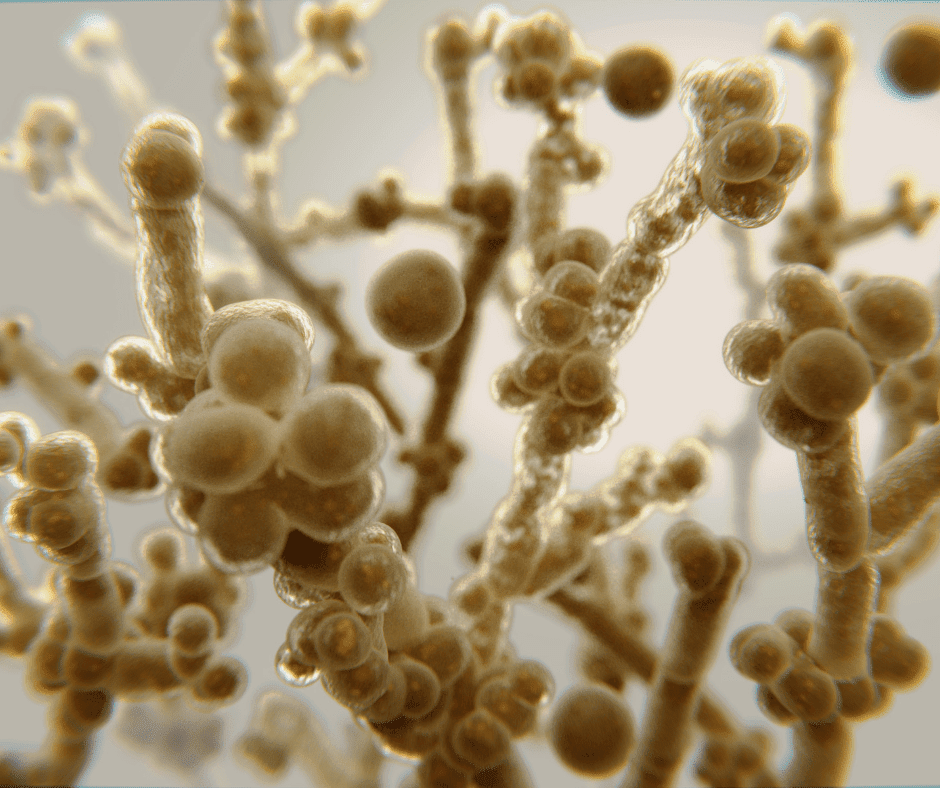
Stops Growth of Bacteria and Fungi: Star anise contains potent antimicrobial properties which have been used as tea tonics to stop the growth of dangerous fungi and bacteria. Today’s science confirms antioxidant, anti-inflammatory, antibacterial and antiseptic abilities of this unique spice.
Star anise extract can stop the growth of gram negative bacteria such as Escherichia coli (E. coli) which causes various respiratory and digestive issues. It shown to be effective in stopping three different kinds of bacteria species, totalling 67 antibiotic-resistant strains. Research points to shikimic acid, anethole and linalool, all found in star anise to have strong antibacterial properties. Star anise also contains mighty anti-fungal benefits. This includes fighting harmful mold and yeast strains such as Candida albicans (C. albicans). C. albicans is the most common strain living in the skin, mucus membrane and GI tract.
When colonies grow out of control, they cause numerous discomforts including vaginal yeast infections in women. Anethole is again shown to inhibit growth of fungal strains like C. albicans.
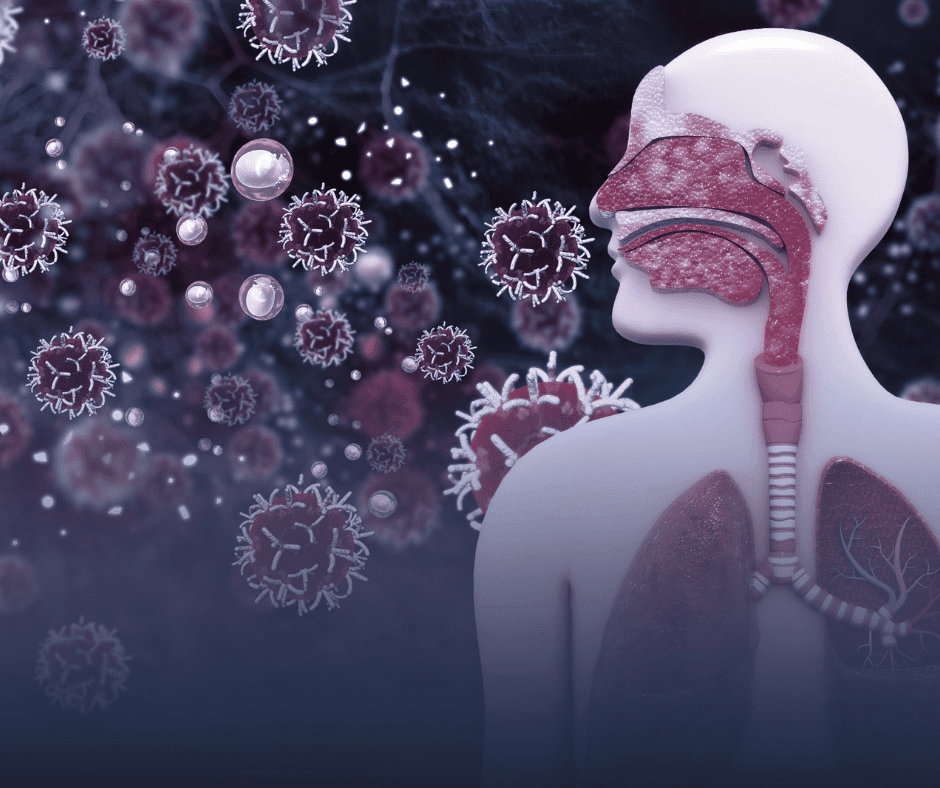
May Reduce Respiratory Congestion: Traditionally star anise seeds were also used to produce oils. These licorice, sweet aroma oils contained powerful ingredients such as trans-anethole, limonene, caryophyllene, estragole and linalool. Such polyphenols possess antibacterial and anti-inflammatory properties, making such oils popular in aromatherapy and relieving respiratory infections.
Improves Lactation: Sometimes new mothers have difficult time producing milk after childbirth. This happens more frequently during women’s delivery of the first child or via caesarean (C) section. A traditional remedy for new mothers and wet nurses has long been licorice-type spices, including star anise.
Anethole has a similar chemical structure to neurotransmitter dopamine and thus can compete for its receptors. Dopamine blocks another hormone prolactin, which stimulates breast milk production. Anethole who can attach itself to dopamine receptors, blocks dopamine from attaching but without the hormonal effect. This results in greater prolactin levels.

Eases Menopause Symptoms: Women’s bodies change during the onset of menopause, with lower production of estrogen and ending of ovulation and menses. Low estrogen levels trigger broad menopause symptoms such as mood changes, hot flashes, fatigue, anxiety, joint and muscle aches. Some of these symptoms may lead to health conditions including osteoporosis and heart disease. Number of pharmaceutical treatments including hormone replacement therapy are available as valid options.
However, more and more women are concerned with negative side effects of pharmaceutical drugs and hormones and focus their search for natural / herbal remedies. Star anise among other spices has been used for centuries as a popular choice. Anethole mimics natural estrogen and can produce some effect of this powerful sex hormone. Spices containing anethole (such as star anise, fennel and anise seed) shown to decrease menopause symptoms. Human trials found that anethole based spices (anise seed) reduced 75% of reported hot flashes in 72 women compared to placebo.
Decreased bone loss, or osteoporosis is another hallmark symptom of menopause. Spices containing anethole can also help reduce bone loss and protect against osteoporosis.
Anti-Diabetic, Lowers Blood Sugar: Diabetes results from chronic high blood-sugar levels, where the body is unable to fully utilize carbohydrate metabolism. It effects millions of people across the globe, costing billions in terms in research, treatments and prevention. As diabetes numbers rapidly continue to climb, governing bodies are searching for solution. This includes the World Health Organization (WHO) who published its recommendations for the development of herbal medicines, including anti-diabetic agents.
Adding star anise to the diet has been a long traditional remedy to normalize blood sugar levels. This spice is low on the glycemic index with an impressive amount of powerful antioxidants which effect blood sugar levels. Anethole is the ingredient found to reduce high blood sugar levels in diabetic animals. A 45-day anethole treatment increased insulin production and improved overall hyperglycaemia (high blood-sugar levels), cholesterol and glycated hemoglobin (HbA1c). HbA1c is formed when glucose attaches to hemoglobin of the red blood cell (RBC). The higher the blood glucose levels, the greater HbA1c levels, which is an important marker for glycemic conditions like diabetes and cardiovascular disease (CVD).

Promotes Bone Health: Star anise’s mighty antioxidant and anti-inflammation properties shown to improve organ and tissue function, including bone. Low bone mass affects tens of millions of people in North America and can lead to injury or bone related diseases like osteoporosis. Star anise is a good source of elements such as: calcium (Ca2+), magnesium (Mg2+), manganese (Mn2+), phosphorus (common ion form: H2PO3- or P3-) and vitamin K, which all partake in bone strengthening process.
Star anise is packed with anethole, the compound which is able to mimic estrogen and produce some of its effects. Osteoporosis is a hallmarksymptom of menopausal women occurring as the result of declining estrogen levels. Research shown that anethole rich supplements were able to protect against osteoporosis and prevent bone loss in animal studies.
Heart Health, Regulates Blood Pressure and Circulation: Traditional Chinese and Ayurvedic practices utilized star anise to improve blood circulation while lowering overall pressure. Often steeped as tea, star anise’s phytonutrients with potent anti-inflammatory and antispasmodic properties were consumed through a warm drink, elevating heart health and circulation throughout the body. Among the nutrient profiles are calcium (2+) and potassium (K+). Potassium is a natural vasodilator that relaxes blood vessel walls, therefore reducing blood pressure and overall strain on the cardiovascular system.
Studies shown that star anise can produce positive changes in hypertensive animals fed high fat diet.
The spice extract reduced weight, blood pressure and cholesterol levels (LDL type). A 12-week trial using star anise significantly reduced many inflammatory causing proteins (cytokines) and plaque buildup within animal blood vessels.

Protects Liver, Detoxifies the Body: Air quality, food and other environmental factors increase stress on our body resulting in greater oxidative stress. Liver is the main detoxification organ that uses many enzymes to process, filter and remove body’s byproducts and toxins. The body responds to the influx of free radicals by increasing inflammation through raising various cytokine levels. In the liver, chronic overflow of these cytokines damages good, functioning tissues leading to several diseases.
Star anise’s antioxidant, analgesic and anti-inflammation phytonutrients reduce oxidative stress and protect various body tissues including liver. Numerous animal trials show that extended star anise treatments protect hepatocytes and decrease many inflammatory markers (cytokines). Also, adding star anise to the diet significantly increased the antioxidant enzyme levels of super-oxide dismutase (SOD), catalase (CAT), glutathione-S-tranferase (GST), as well as the body’s own potent antioxidant glutathione (GSH).
Human trials shown similar results to the animal models, stabilizing hormone levels while reducing overall triglycerides and, kidney and liver tissue damage.
Relieves Pain and Inflammation: Inflammation is a response by immune system to protect the body from infection, injuries and any other factors which may cause harm. Since the ancient times, star anise tonics, often steeped as tea were used to relieve injury swelling, muscle and joint pain, including rheumatism arthritis. Star anise list of phytonutrients includes vitamins, minerals, proteins and carbohydrates making it a mighty anti-inflammatory agent. The antioxidants within star anise: protect cellular integrity (preventing lipid peroxidation); improve antioxidant enzymes (CAT, SOD, GST) and body’s own antioxidant GSH; raise high-density lipoproteins (HDL) type cholesterol.
Trans-anethole is the main active compound shown to reduce number of inflammatory causing cytokines such as tumor necrosis factor (TNF)-alpha, interleukin 1 beta (IL-1b) and interleukin 6 (IL-6) and nuclear factor kappa of B cells (NF-kB). NF-kB is a protein complex inside cell nucleus that controls the decoding (transcription) of DNA genes for cytokines.
Other essential oil compounds include: linoleic acid, palmitic acid, anisaldehyde, estragole, limonene, pipene, and alpha-terpineol; these compounds can decrease inflammation of muscles, joints and skin by inhibiting cyclooxygenase-2 (COX-2) enzyme. COX-2 is one of the main regulating enzymes of the inflammatory response which activates production of inflammation lipids prostaglandins and proteins (cytokines).
Studies shown that star anise is able to significantly reduce numerous inflammation markers within animals. The antioxidants seek out free radicals and engage messaging pathways resulting in decreased swelling, pain and oxidative stress.

Anti-Cancer Agent: The powerful antioxidants within star anise that eliminate free radicals also possess cancer fighting abilities. The reduction of oxidative damage within tissue and cells decreases overall risk of abnormal cell mutation and growth. Numerous studies revealed that star anise phytonutrients have significantly decreased oxidative stress and inhibited cancer progression in diseased animals.
Being a powerful anti-inflammatory compound, anethole can also effect various types of cancers. Anethole engages and decreases tumors in breast and prostate cancers. It attacks cancer in two ways: by initiating a self-destruction mechanism (apoptosis) and, elevating self destructing proteins, while reducing inflammatory proteins.
Brain Health and Combat Neurological Disorders: The ancient cultures of China, Persia and India used star anise like spices to treat variety of diseases. Science identified inflammation symptoms within neural tissues and their development and progression into neurodegenerative diseases such as Alzheimer’s, Parkinson’s, Multiple Sclerosis (MS), depression, stroke, anxiety and brain cancer.
Today, spices such as star anise hold immense potential and are advocated bygoverning bodies (World Health Organization) as natural and sustainable therapies against wide range of diseases.
Star anise is loaded with potent compounds which fight inflammation, protecting brain tissue and function while creating a sedative and anticonvulsant effect. Studies shown that active compounds like trans-anethole reduced the frequency, length and intensity of epileptic seizures in an animal model. Other compounds within the star anise oil: estragole, linalool, alpha-terpineol also contributed to positive outcome. The mechanisms involved are extremely complex, but scientists suspect that star anise’s phytochemicals interact with sodium-potassium (Na+ K+) pumps and GABA (both A and B) receptors creating neural excitation reducing overall seizures. GABA (gamma-Aminobutyric acid) is the main inhibitory neurotransmitter within the central nervous system (CNS). This amino acid is an important controller of many systems, regulating activity of muscles, hormones and nervous tissues.

Stress, anxiety and depression are common neurological conditions which affect the body’s biochemistry, thoughts, feelings and behaviour. Depression often accompanies other diseases and considered to be the main reason for disability around the world. Though the exact mechanism is not known, scientists propose a series of messaging mechanisms involving dopamine, serotonin, epinephrine and norepinephrine. These compounds are also referred to as monoamine neurotransmitters which are used in neural networks as messengers to regulate emotion, arousal and parts of memory.
Star anise is an effective sedative agent producing a calming effect, relieving stress and anxiety. The main ingredient anethole has similar chemical size to dopamine and able to replicate some of its effect. Anethole studies show improved anxiety symptoms in stressed animals. Depression shown to have lower levels of monoamine neurotransmitters (norepinephrine, serotonin and dopamine) in the brain and often accompanies other physical or mental conditions. Since many of these conditions share common physiological and biochemical symptoms, spices like star anise can also treat depression. Anethole shown to be a powerful antidepressant by interacting with these very same neural pathways, increasing norepinephrine and serotonin levels. Human trials confirm similar findings as regular consumption of anise seed decreased overall depression symptoms.

Improves Sleep: Stress not only translates into oxidative stress or anxiety, it can also cause restlessness or insomnia. The mind’s high state of engagement increases epinephrine levels stimulating senses and inhibiting sleep. As previously mentioned star anise has sedative properties and is able to modulate levels of some of the involved neurotransmitters and hormones. The ability to increase levels of certain chemicals in one condition while lowering them in another, is a unique property of numerous natural herbs and spices, including star anise.
Star anise has a soothing licorice like smell producing an aromatherapeutic effect. Both animal and human studies showed that active ingredients including anethole, estragole, linalool, limonene and 4-terpineol assist in reducing neural excitation while improving serotonin levels.
Skin Care: The UV radiation from sun exposure damages skin cells and is one of the environmental factors of oxidative stress within the body, raising the risk for skin related conditions and cancers. Research identified star anise as a potent anti-microbial, anti-inflammatory, antioxidant, antiseptic, and an anti-bacterial agent capable of reducing free radical damage including skin cells and early signs of aging.
Collagen is an important structural protein in the skin responsible for elasticity and integrity of the cells. Star anise is rich in vitamin C and vitamin A, strong antioxidants that reduce oxidative damage in cells. Vitamin C is an important part of collagen production leading to healthier looking skin. Vitamin A replenishes damaged skin cells, minimizing appearance of scarring or stretch marks.
Anethole protects against ROS damage and reduces oxidative stress by enhancing glutathione (GSH) and nuclear factor-like2 (Nrf2) levels. Nrf2 is a transcription factor protein in humans that regulates antioxidant proteins. GSH is the body’s own natural antioxidant considered one of the most important ROS scavengers. Trans-anethole in other spices shown to lighten the skin and reduce blemishes by decreasing melanogenesis (production of melanin from sun exposure).
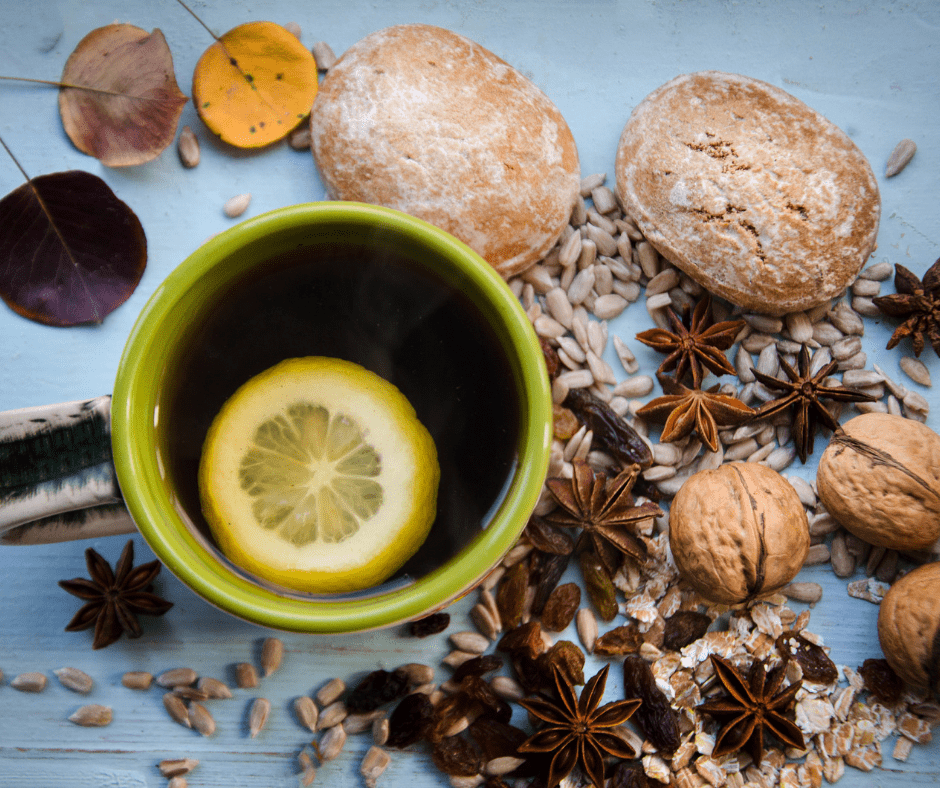
How to use
Tea: Star anise is a delicious spice that taste amazing in tea. Enjoy a cup or so daily to receive its benefits. Below is my favorite star anise tea recipe that’s not only healthy, it’s delicious!
Ingredients
- 1 teaspoon star anise seed (the star)
- 2 teaspoon dried peppermint leaf
- 1 teaspoon dry ginger root
- 1 teaspoon raw honey, if desired
Add herbs to a large mug. Pour boiling water over and allow to steep 10 -15 minutes. Strain and enjoy!
Read more about making Herbal Tea.
Tincture: Most herbs can be made into what’s called a Tincture. A tincture is a liquid extraction of medicinal herbs into alcohol that is taken by the dropper full. It is a highly effective and efficient way to administer plant medicine.
If you have never made a tincture, follow our step-by-step guide here and learn how!
Don’t want to make your own? HealthPrimitive has you covered! Visit to purchase our Star Anise Elixir.
Cooking: Obviously spice is beloved for a reason. It has a delicious unique flavor that is amazing when added to soup’s, broths, baking such as cookies and even slow cooked meats. If you want to receive most out of star anise benefits, use daily in your cuisines.

Safety Considerations
Star anise has been part of traditional medicines for centuries and deemed safe to consume. However, there is a bit if caution to be aware of. Ensure that you are using Chinese star anise and not Japanese variety. The Japanese type is inedible and poisonous when consumed. Some star anise products may be packaged and contaminated with trace amounts of Japanese star anise. This may be tolerable for an adult, but may produce adverse symptoms in infants.
One review notes two cases with infants under 6 months displaying hypertonia, excess crying and vomiting after possible Japanesestar anise contaminant. Now this is attributed to the toxic variety (Japanese) of the star anise, and no official studies have been done, or cases reported with standard Chinese type.
Pure Chinese star anise is commonly given to infants and has been deemed safe. As star anise popularity steadily grows in the West, there are still general cautions regarding using this spice for women who are pregnant or breastfeeding. Active ingredients within star anise that produce health benefits in some, may have adverse affects in others. For example, the main component anethole mimics estrogen, which may produce some hormonal imbalances within the body. Anethole competes with dopamine for its receptors and can increase prolactin and breast milk production. This may not be appealing to women who already have high prolactin levels. Always speak to your doctor first before starting any herbal therapies, if you are pregnant, nursing or taking medication. View our disclaimer here.
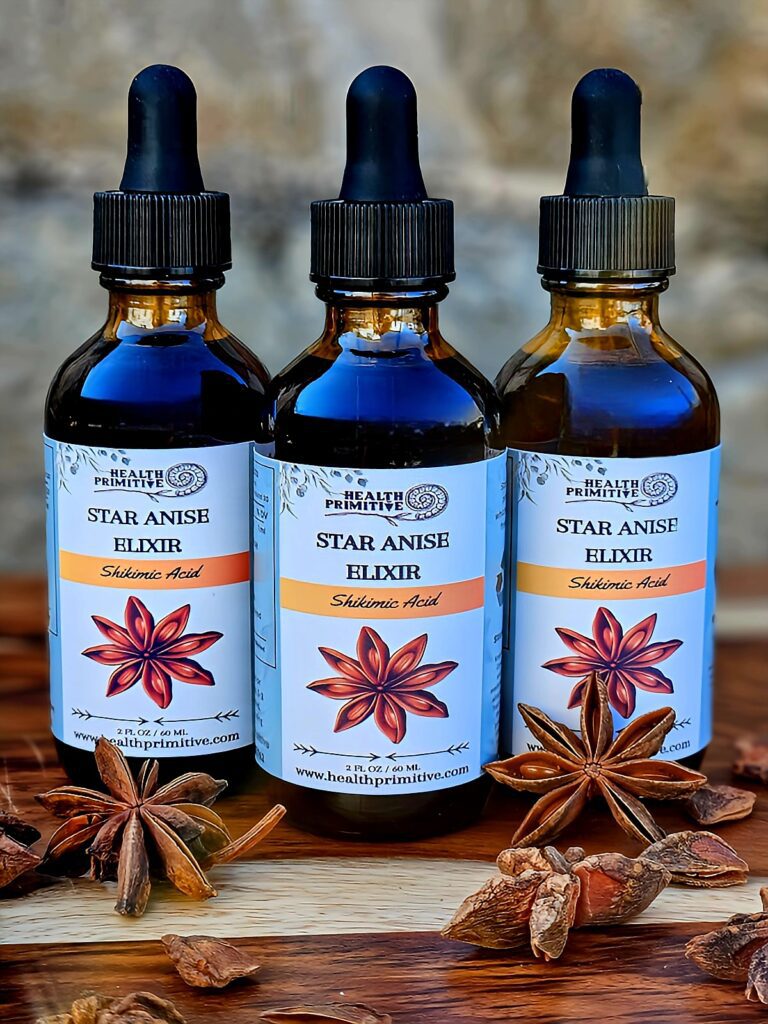
Final thought
Compounds within star anise that give its unique flavour are also responsible for wide array of health benefits. The main ingredient shikimic acid is a start up ingredient for antiviral medication Tamilflu. The spice is vitamin and mineral rich and the essential oils are packed with powerful polyphenols like anethole, linalool, estragole, pipene and limonene.
Together these phytonutrients boost immune system, balance hormones/neurotransmitters, improve organ and bone health, fight bacteria/viruses and fungi, decrease oxidative stress as well as variety of health conditions and diseases. All great reasons to incorporate this spice into your life!
Stay Wild
Sources below
https://pubmed.ncbi.nlm.nih.gov/31997473/
https://greatist.com/eat/star-anise-benefits
https://www.healthline.com/nutrition/anise#TOC_TITLE_HDR_9
Chang K, Ahn Y. Fumigant activity of (e)-anethole identified in Illicium verum fruit against Blattella germanica. Pest Management Science. 2002:58(2);161-166.
8 Jellin J, Gregory P, eds. Natural Medicines Comprehensive Database, 5th ed. Stockton, CA: Therapeutic Research Facility; 2003.

Kayce Heister
Kayce is a Clinical Herbalist, Naturopathic Practitioner (HHP), Active Forager, Wild Food Chef and Mother of three. She has spent the last 20 years practicing herbalism and natural health, and spends most of her time educating others on the amazing potential the natural world can offer.